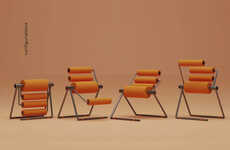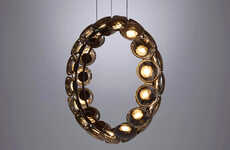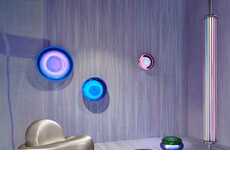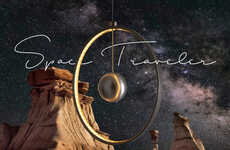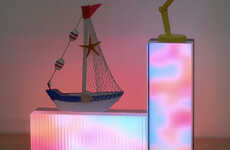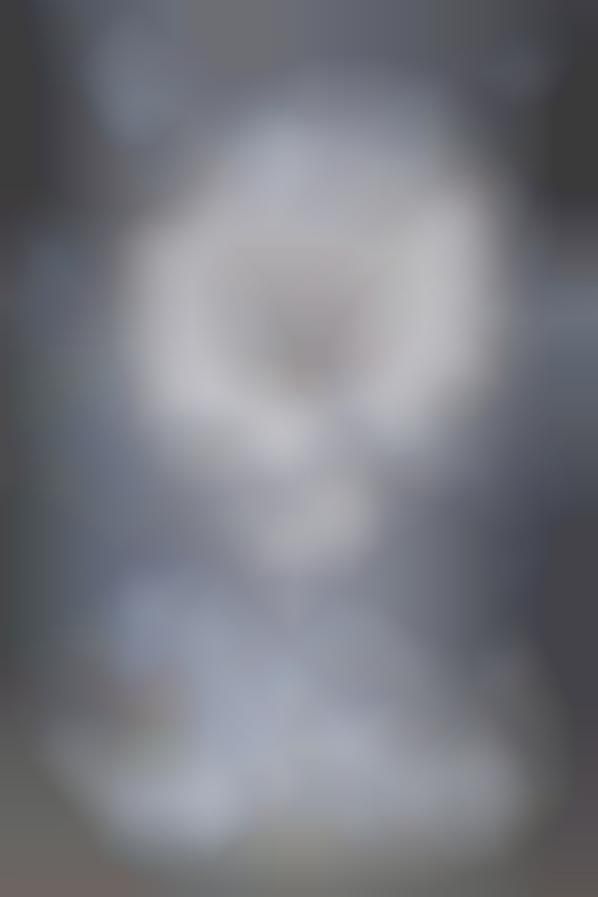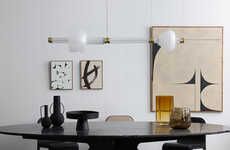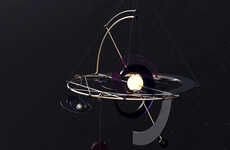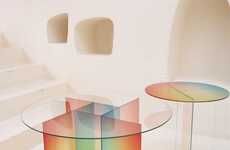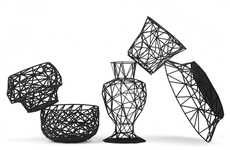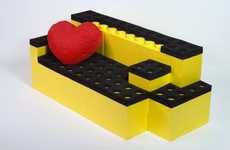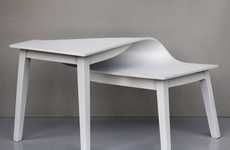Nebula by Cecil Raymond is a Chaotic and Unconventional Project
Christopher DeLuca — May 31, 2011 — Art & Design
References: balmondstudio & archdaily
Nebula by Cecil Raymond is a chaotic and unconventional spatial design that completely changes the feel of the space in which it is installed. The plates of hand-polished aluminum create a sense of confusion in the viewer; the installation definitely unleashes the creative imagination.
Nebula by Cecil Raymond is particularly interesting because of its ability to blur the distinctions between architecture, art and design and create something that stands without precedent. As a result of the positioning of the lights in and around Nebula by Cecil Raymond, there is continually a different visual effect being presented to the viewer.
This project is interesting in how it affects the mood and perception of a room. An apt categorization would be ambient design.
Nebula by Cecil Raymond is particularly interesting because of its ability to blur the distinctions between architecture, art and design and create something that stands without precedent. As a result of the positioning of the lights in and around Nebula by Cecil Raymond, there is continually a different visual effect being presented to the viewer.
This project is interesting in how it affects the mood and perception of a room. An apt categorization would be ambient design.
Trend Themes
1. Chaotic Spatial Designs - Exploring chaotic spatial designs can result in disruptive innovations that challenge traditional notions of space and creativity.
2. Blurred Boundaries - Blurring the distinctions between architecture, art, and design opens up disruptive innovation opportunities in creating new and unique spatial experiences.
3. Ambient Design - The use of lighting and unconventional materials in spatial design can create disruptive innovations that transform the mood and perception of a room.
Industry Implications
1. Architecture - The integration of chaotic spatial designs can disrupt traditional architectural principles, pushing boundaries and inspiring novel structures.
2. Art - Exploring the blurred boundaries between architecture, art, and design can lead to disruptive innovations that challenge conventional artistic expressions.
3. Interior Design - Incorporating ambient design principles into interior design offers disruptive innovation opportunities to create unique and immersive spaces.
2.3
Score
Popularity
Activity
Freshness
